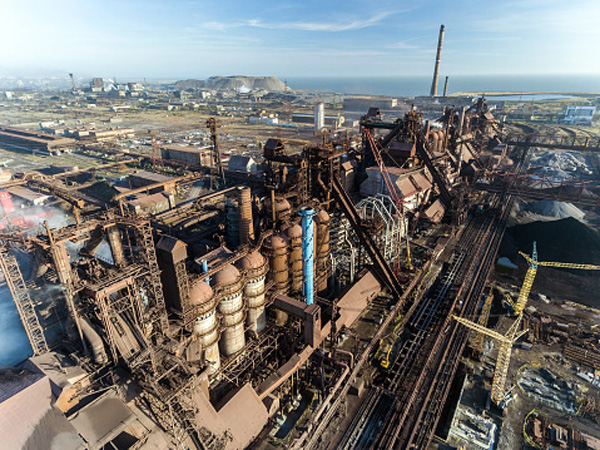Mariupol Azovstal Metallurgical Complex
Mariupol Azovstal Metallurgical Complex (Маріупольський металургійний комбінат «Азовсталь»; Mariupolskyi metalurhiinyi kombinat ‘Azovstal’). One of the largest ferrous metallurgical complexes in Ukraine. Located in Mariupol, it uses iron ore from the Kryvyi Rih Iron-ore Basin and coal from the Donets Basin. The construction of the plant began in 1930. Most of its machines and equipment were imported from the United States of America, and American engineers took part in building the plant. The first blast furnace went into operation in 1933, and the first Martin gas furnace in 1935. By 1941 the plant had four blast furnaces and six Martin gas furnaces. After the Second World War the plant was reconstructed. In 1948 a large blooming, rail, and girder mill—the largest mill in Ukraine and one of the largest in the Union of Soviet Socialist Republics—was opened. As a result the plant could carry out a complete metallurgical cycle. In October 1953 a large rolling mill was added. By 1959 the plant had 6 blast furnaces and 12 Martin furnaces, and in 1961 the Martin furnace shop was reconstructed and expanded. The plant’s steel output was still insufficient, and its quality was low because of phosphorus content in the ore. After 1958 the plant for decades used a special flux agglomerate delivered in a hot state by the Sea of Azov from the Komysh-Buruny Iron-ore Complex, together with the iron ore from the Kerch Iron-ore Basin; more recently, the iron ore and the agglomerate have been transported from the Kryvyi Rih Iron-ore Basin. In 1977 the oxygen converter process was added. In 1981 the electric-arc steelmaking unit was established, and the Azovstal plant was transformed into a full-scale metallurgical complex. By 2004 the complex annually produced 6 million tonnes of cast iron, 7 million tonnes of steel, 4.5 million tonnes of rolled steel, and 1.5 million tonnes of agglomerate. The plant produces such products as rails, poles, stands, girders, and structural forms for buildings and bridges.
In 2022, during the full-fledged invasion of Ukraine by the Russian Federation and a massive assault on Mariupol, the Azovstal complex became a key bastion of resistance of the Ukrainian defenders of the city against the invading Russian troops. As a result of extremely heavy Russian bombardment, the Azovstal plant was almost totally ruined.
[This article was updated in 2022.]
.jpg)
